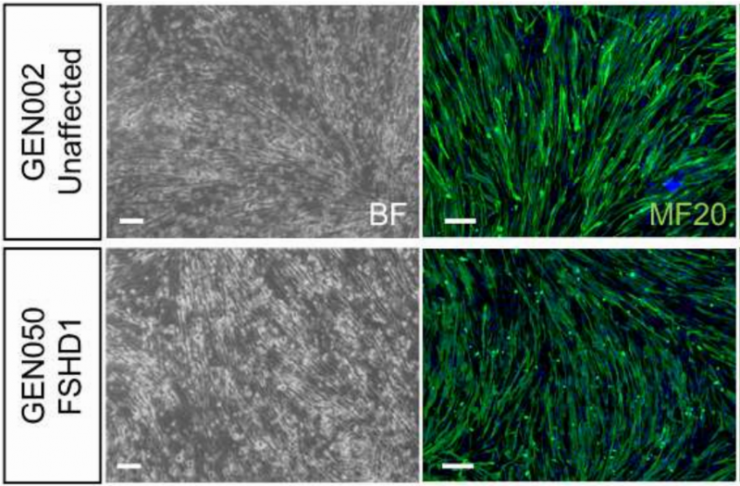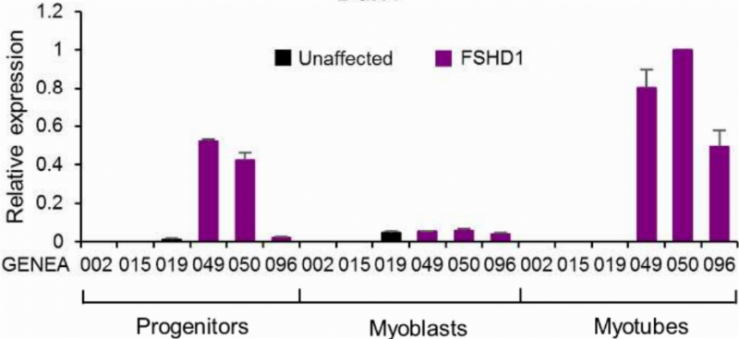Posted by Amanda Rickard on Jul 14, 2016
Originally published in Genea Biocells Newsletter by Amanda Rickard
The Genea Biocells team published the first ever stem cell model of a muscular dystrophy in Stem Cells Translational Medicine, May 2016. Caron et. al. 2016 is the culmination of efforts from our scientists who utilized our screening capacity and high content image analysis to develop an efficient protocol for differentiating human pluripotent stem cells into skeletal muscle in a dish. This work was funded by the FSHD Global foundation who recognized the critical importance of in-vitro disease modeling of disease-relevant human cells toward greater understanding of disease and therapeutic developments.

The first disease to which this new differentiation protocol was applied was Facioscapulohumeral Muscular Dystrophy (FSHD), one of the most common muscular diseases which currently has no cure or treatment. Genea Biocells, through our hESC derivation activities that commenced in 2004 with the first Australian hESC line, generated 3 FSHD affected hESC lines carrying deletions in 4q35 of the D4Z4 DNA region. These lines were then differentiated by our FSHD modeling group, led by Dr. Leslie Caron, to muscle cells (Figure 1) and analyzed for markers of FSHD. In collaboration with Dr Davide Gabellini (Dulbecco Telethon Institute) and Dr Kian Leong Lee (National University of Singapore) we were able to measure an FSHD specific gene expression profile which includes clearly different expression levels of genes known to be very important for muscle development and expression of the gene that causes FSHD muscle death, called DUX4 (Figure 2).

Genea Biocells' focus now is to screen potentially therapeutic drugs that can restore these changes back to healthy, normal levels. Our screening system combines our expertise in muscle differentiation, our well characterized and clinically ready drug libraries, our expertise in FSHD pathogenesis, and our high-throughput screening technology. In addition, we are collaborating with academics to be sure that any drugs identified as therapeutic here can move into animal models, and ultimately the clinic, quickly and efficiently. Stay tuned for more exciting news from our FSHD modeling group!
We are very thankful to FSHD Global for their support in this muscle differentiation development project, which will not only accelerate therapeutic developments in the FSHD space, but will be applied to many other genetic muscle diseases toward therapeutic options.
For contract services or to discuss projects feel free to contact us directly at info@geneabiocells.com.
REFERENCE
Caron, L., et. al. (2016) A human pluripotent stem cell model of FSHD-affected skeletal muscles. Stem Cells Trans Med. 2016 May 23; doi:10.5966/sctm.2015-0224





Connect with us on social media